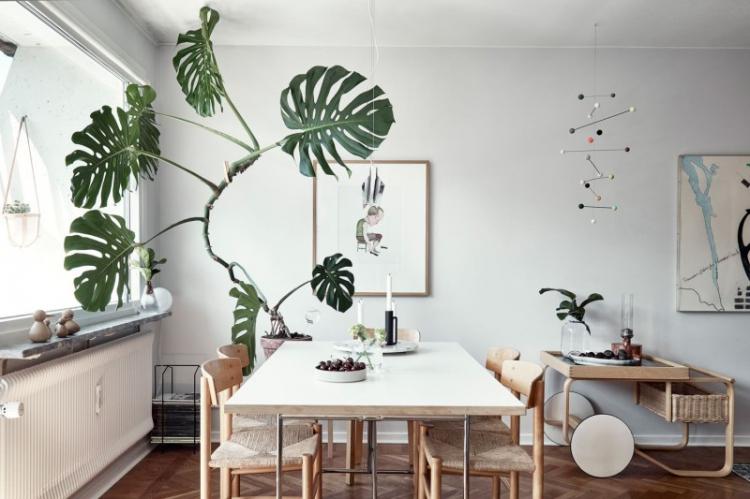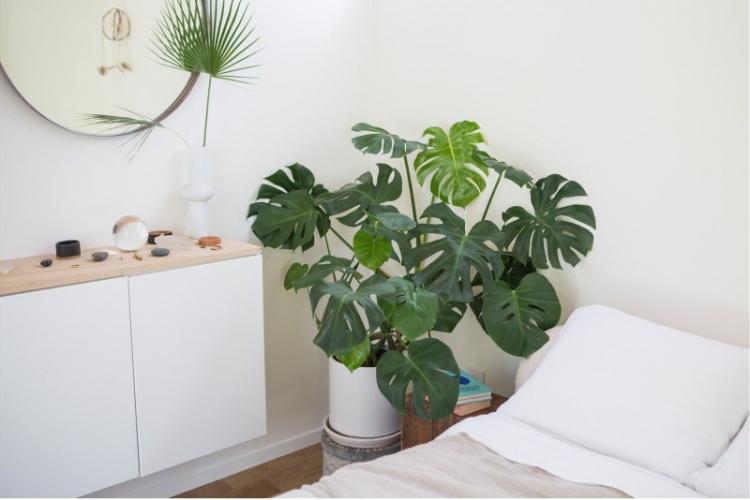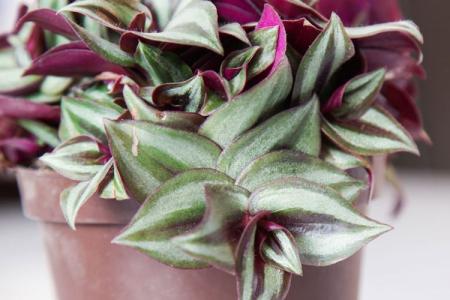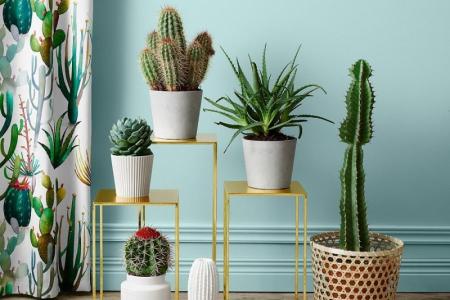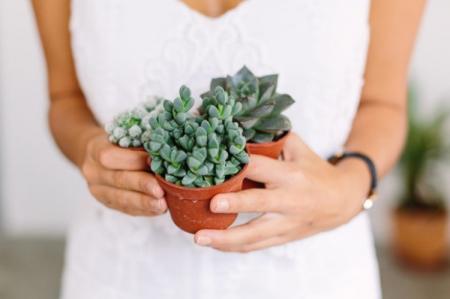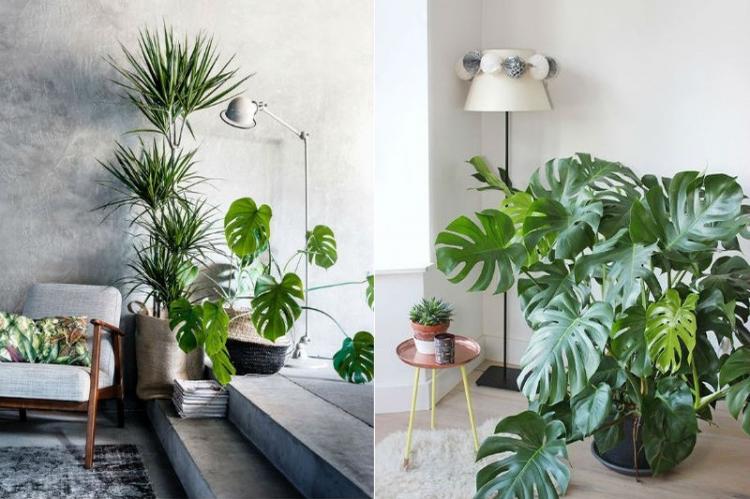
For about a century and a half, a bizarre and extravagant monstera has not gone out of fashion with flower growers, but why? For many years, the unusual plant was considered a predator because of the dangerous appearance of its large and spreading cut leaves. European sailors who first entered the rainforests considered them intimidating. But soon there were connoisseurs of exotic beauty, and now the monstera adorns many apartments and houses. And we will tell you how to take care of her!
general characteristics
Monstera is a unique tropical long-liver, which has taken root in our apartments and houses for so long that it seems to have always been here. The evergreen liana captures American rainforests and stretches ten meters. Even indoors, some varieties can easily grow up to 3-5 meters.
Back in the 18th century, there were terrible legends about killer plants, which were found by sailors and travelers. It was believed that after a meeting with forest monsters from a person or an animal there would be nothing left but a skeleton. And roots and shoots hanging from trees can sprout right through the body.

These myths were later debunked by botanists when the monster was first brought to the UK. And in the middle of the 19th century, the Dane Liebman even published a whole collection on South American vegetation. At first, the monster was mistakenly assigned to the genus Philodendron, but was soon allocated to a separate category.
A unique feature of the monstera is that it easily continues to live even without contact with the soil. Such plants are called epiphytes and root completely on other trees. Epiphytes do not belong to parasites, because they do not receive any nutrients from the "parent", except for physical support.
A tropical monstera is a flowering plant, but it is difficult to achieve flowering even in greenhouses: in an apartment you are unlikely to succeed. Its large white flower resembles a sail, and over time it turns into the same large purple fruit. In some varieties of monstera, these fruits are even edible, in particular, in the gourmet one.
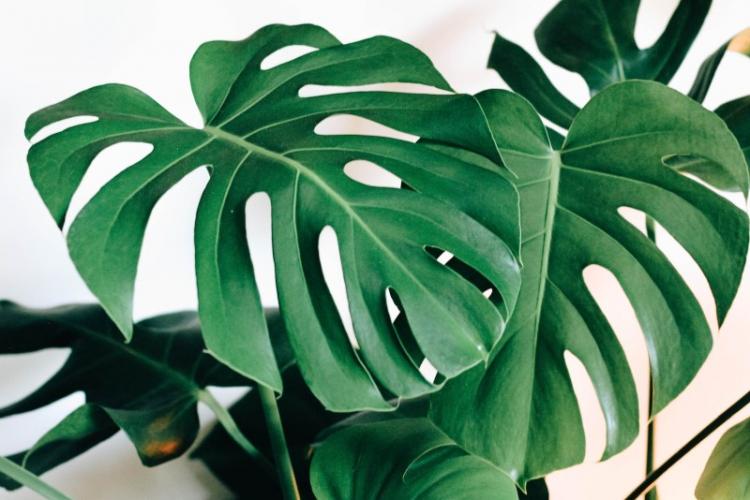
Types of monstera
There are about 50 species of luxurious evergreen monstera in the world, but in our latitudes, only a few of them are mainly grown. They are appreciated for their beauty, decorativeness, elegance, and for their beneficial effect on the indoor air.
Monstera oblique
The most popular homemade variety is also called the crescent or monster expilata. It came to the middle latitudes from the Brazilian and Guiana tropics, but is also found in other humid forests. Compared to its large relatives, this vine is rather small: the leaves grow up to 20 cm.But this compensates for a long peduncle with a large flowering ear up to 4 cm.
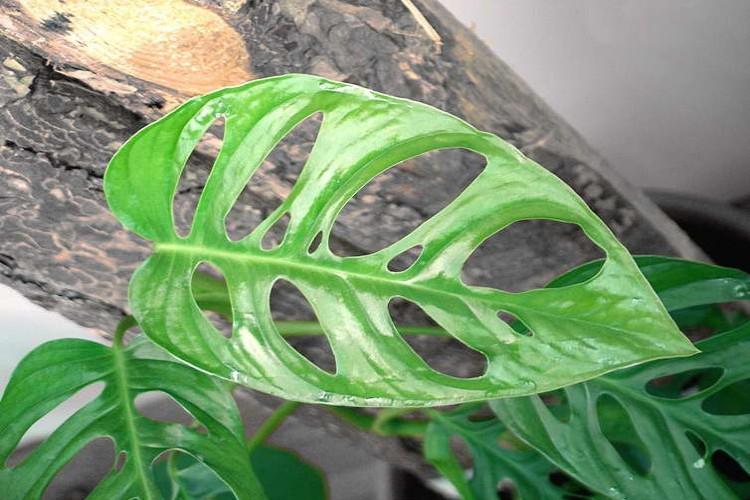
Monstera gourmet
The second widespread variety came to the European continent from the forests of Central America. In its natural environment, a giant liana can grow for a kilometer, in greenhouses - up to 12 m in height, and in apartments - up to the ceiling. It is a rare cultivar that can be achieved at home if the plant is properly cared for.
Young leaves of the gourmet monstera first appear whole and heart-shaped, but over time their shape changes and dissections appear. The skin becomes more tough and coarse, against the background of which graceful white flowering cobs stand out. There is a special variety of gourmet monstera with whitish leaves, but it is more capricious and demanding to care for.
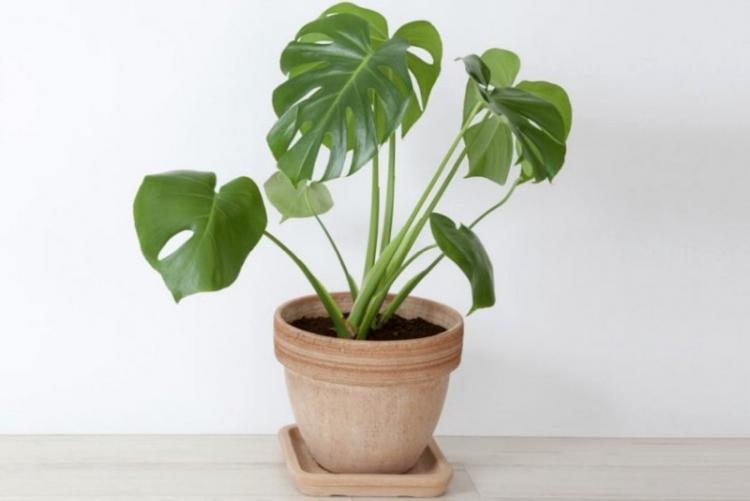
Monstera Borziga
It is a thinner and more delicate variety that feels great in apartments and offices. It is smaller and more graceful than the classic gourmet monstera, and the leaf plates grow up to 30 cm.In nature, the species is often found only in some regions: especially in Mexico.

Monstera punched
A climbing liana with egg-shaped leaves made its way into houses and apartments straight from the American tropics.It reaches a meter in height, but at the same time remains unequal, with expanding leaves. The plates are covered with irregular and irregular holes, which makes the flower look especially unusual.

Monstera Adansona
One of the most original varieties is notable for the structure of the leaves: they are not cut, but are strewn with many holes along the entire surface of the plate. In its natural environment, it lives in Brazil and Costa Rica and reaches 8 meters in height, and large leaves reach 50-55 cm. During flowering, a yellow ear forms on a short peduncle, but it is almost impossible to achieve this in an apartment.

Monster care
Before you get a monster, keep in mind that even in an apartment, a tropical giant grows to an impressive size. So be sure to make sure you give her enough space in the room.
Temperature
Like its tropical cousins, Monstera loves warm climates and does not tolerate winter frosts. Make sure that the temperature in the room does not drop below 16 degrees, and in summer it can easily endure even 25 degrees.

Lighting
Sprawling and lush monstera, contrary to popular belief, does not require too much sun, and direct rays leave burns. She tolerates shaded areas well, which is why she has taken root in apartments. But keep in mind that if there is too much shadow, the leaves will grow paler, smaller and not with such deep cuts.


Watering
But the monstera needs as much water as possible, because soft and warm tropical showers will have to be replaced on their own. The flower needs abundant watering, but do not overmoisten the soil. It is easy to notice from the monster that something is wrong: if there is too much moisture, it “cries”: the drops just collect on the leaves.
Do not forget about spraying, without which the leaves dry out and turn yellow in the heat. Wash the plates with warm water to remove dust and dirt from them, but use only soft water, otherwise whitish spots will remain. In winter, reduce the intensity and frequency of water treatments, but do not completely abandon them.

Fertilizers and feeding
Monstera is a powerful and strong plant with large leaves, therefore, feeding during active growth is important for its appearance: from mid-spring to late summer. You don't have to reinvent the wheel: Specialized mixes for decorative foliage will do. But in winter it is undesirable to fertilize the monster, otherwise it will begin to grow more actively, but the leaves will be lethargic and weak.
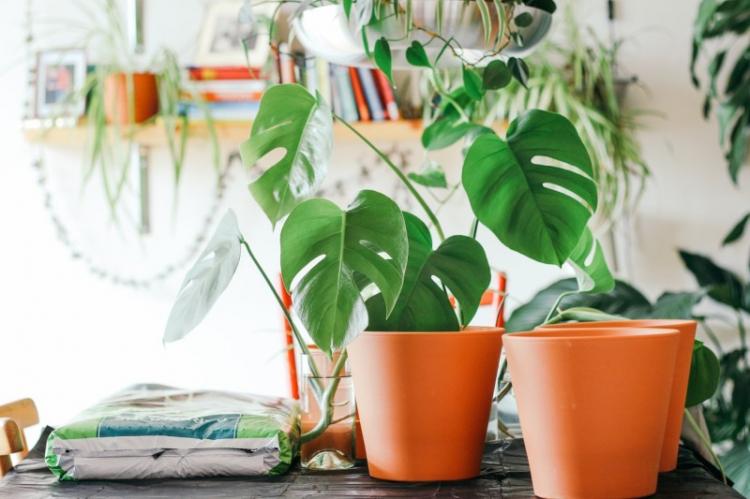
Pruning
The tropical visitor does not need regular pruning, but as a vine it needs support to grow. If you want to form a sprawling and voluminous plant, cut the stem once or twice at the very beginning.
The peculiarity of the monstera is in a large number of long and strong aerial roots, with which it tries to fix itself on the base. Travelers used to mistake them for the tentacles of tropical monsters. But in reality, they are very delicate and delicate, therefore, they must be handled with care.
As it grows, it is recommended to root all adventitious roots in a pot, otherwise the flower may grow even to the protrusions and roughness of the wall. And then remove it carefully so as not to damage it, it is almost impossible.
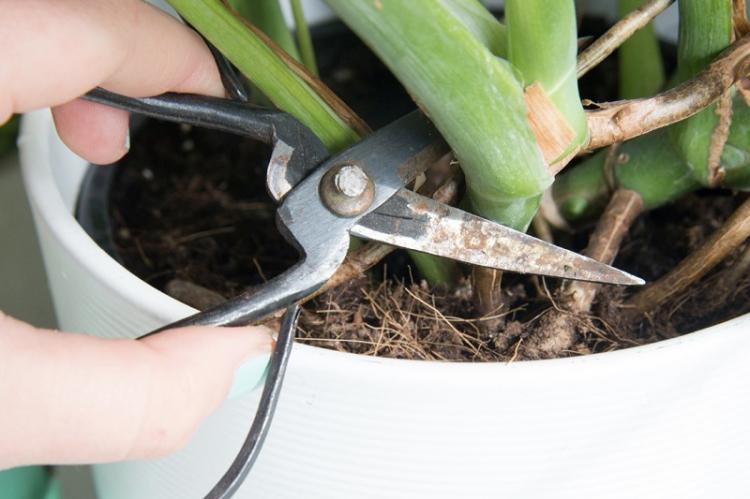
Planting and breeding monstera
Like other vines, the easiest way to propagate a monster is by cuttings: it quickly takes root in almost any conditions. Cut off the top or use any stem cutting with multiple leaves. Just be sure to cut it below the aerial root: a full-fledged root system will develop from it.
Monstera is growing rapidly, so periodically it needs to be transplanted: once every 1-1.5 years. But keep in mind that for all its power, the flower is very fragile and delicate, so you need to handle it with care. Large and spreading 5-year-old monsters stop replanting so as not to damage: it is enough to renew the topsoil.
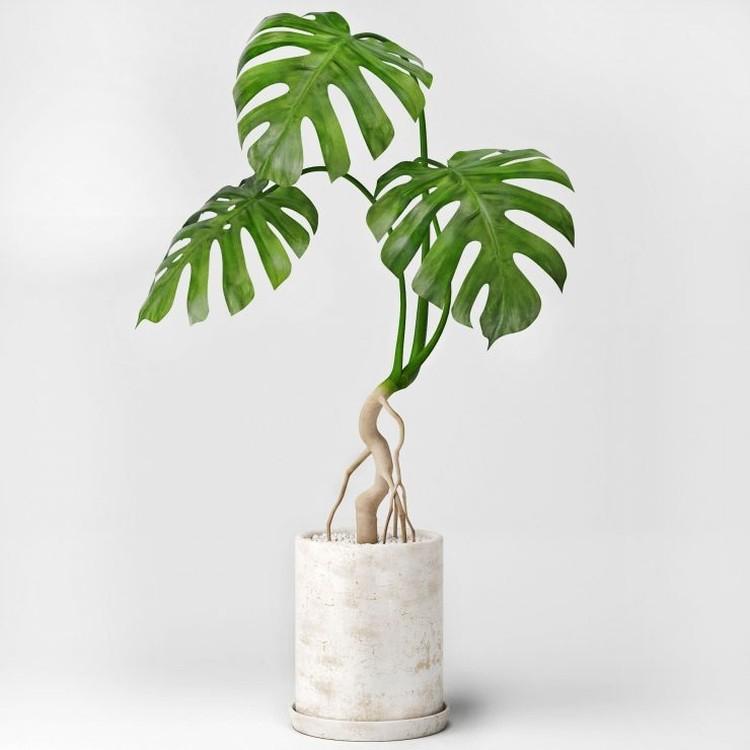
Pests and diseases
Monstera rarely gets sick and almost all problems are associated with improper care: an abundance or lack of moisture. If the leaves grow small and without cuts, the flower does not have enough light, and if spots appear from below, this indicates an overflow. Brown color indicates a lack of moisture or cramped bitterness, and pale color and yellow spots indicate excessively intense lighting.
Scabbards, aphids and spider mites appear on the succulent leaves and stems of the monstera. But getting rid of them is quite simple: treat the plant with special insecticides.
Keep in mind that the juice of some varieties of monstera contains substances that are corrosive to humans. They can irritate the skin and mucous membranes, so be sure to find out the features of your species and handle the flower carefully.

Monstera - photo
Monstera is definitely one of the brightest tropical plants that can be easily grown in an apartment. One flowerpot is enough to create a cool and cozy green space. Make sure of this with your own eyes!





